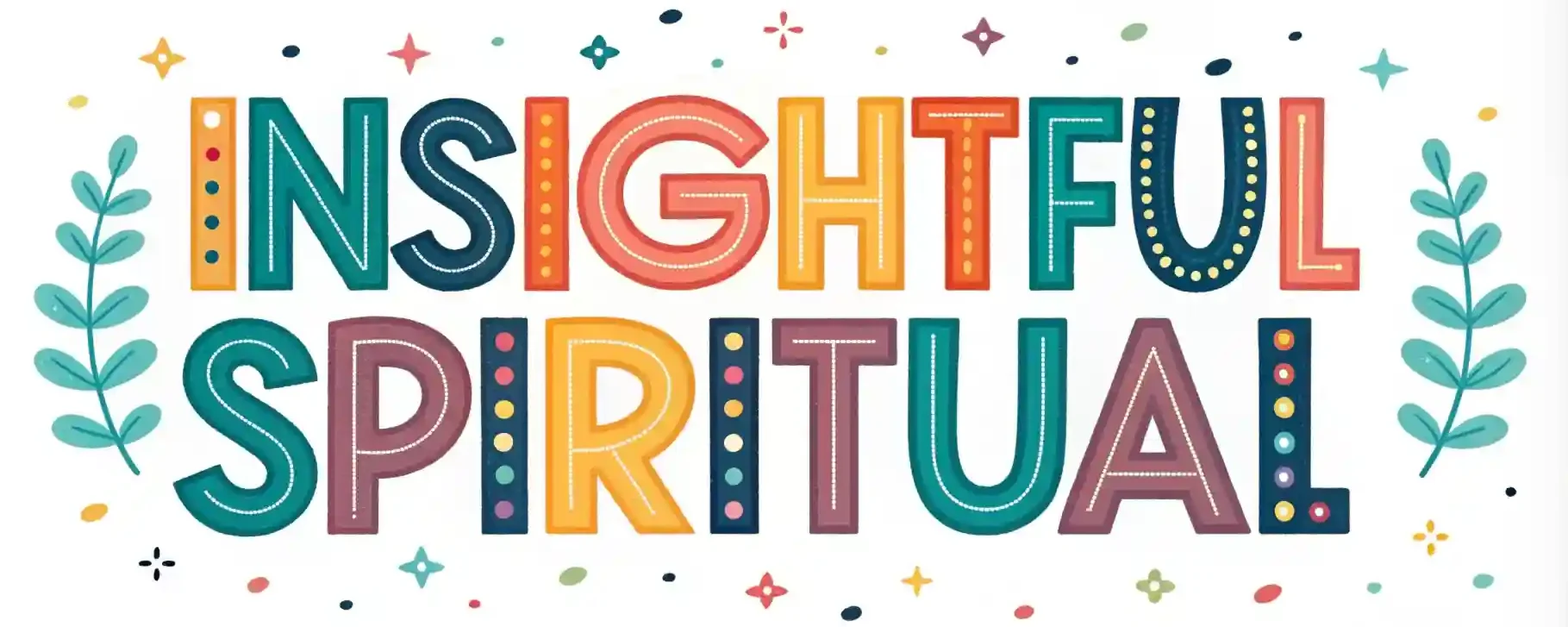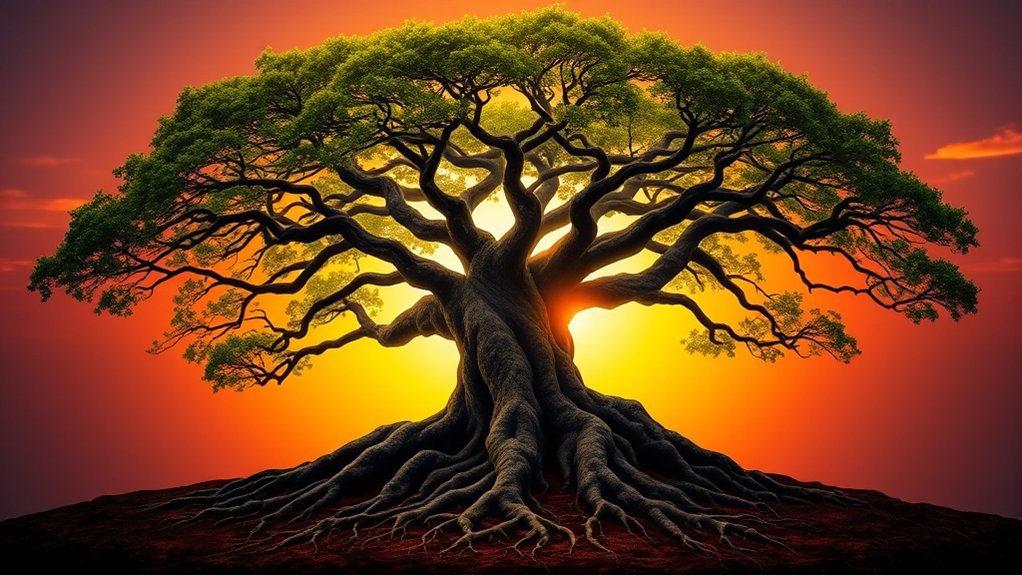Tree of Life Spiritual Meaning: Symbolism Explained
The Tree of Life is a strong symbol in many cultures. It shows ideas like growth, connection, and renewal. The tree’s roots remind us of where we come from and give us stability. The branches and leaves show how we grow and stay connected with others. Learning what these symbols mean can help you see how the tree reflects life’s cycles. When you look at different traditions, you can find more ways the tree represents personal growth and spiritual harmony. Thinking about what the tree might mean in your own life can give you new insights and help you feel more connected.
Origins and Cultural Significance of the Tree of Life
The Tree of Life shows up in many cultures and stories from history. It often stands for how all life is connected.
Its origins come from stories that explain how life began and how nature stays linked. Different cultures see the Tree of Life as a symbol of growth, strength, and harmony.
For example, ancient Egypt saw it as a sign of eternal life. In Norse mythology, the World Tree Yggdrasil connects different worlds. These roots and branches are symbols of balance and unity.
They remind us that everything in the universe is connected. By learning about its roots and meanings in different cultures, we see why the Tree of Life is important to many traditions today.
Symbolic Elements and Their Meanings
Different parts of the Tree of Life have special meanings. The fruit on the tree shows growth, plenty, and the rewards of learning. It reminds us that life has a lot of potential. When we see the fruit, we think about how nurturing ourselves can lead to success and happiness.
The roots of the tree represent connection, stability, and where everything begins. The roots hold the tree in place and remind us that all things are linked and come from a strong foundation. They show that our past and origins are important to our growth.
Together, the fruit and roots teach a simple idea: growing in life means both exploring new things (like the fruit) and understanding where we come from (like the roots). The main message of the Tree of Life is that true meaning comes from balancing growth and connection.
This balance helps us grow stronger and stay grounded at the same time.
Variations of the Tree of Life in Different Traditions
Many cultures and spiritual traditions have their own versions of the Tree of Life. Each version has its own special meaning and symbols. Usually, the Tree of Life shows a connection. It connects heaven and earth or life and eternity.
For example, in Norse mythology, there’s Yggdrasil, a large ash tree. Yggdrasil links nine worlds and stands for the universe.
In Celtic traditions, the Tree of Life means growth, rebirth, and nature’s cycles. It shows how life keeps changing and renewing itself.
In Kabbalah, a form of Jewish mysticism, the Tree of Life shows spiritual paths. It helps people understand divine wisdom and connect with higher consciousness.
These different versions of the Tree of Life show how the symbol adapts across cultures. They all share ideas of connection, growth, and the beginning of life.
Learning about these differences helps us understand its many meanings.
How the Tree of Life Inspires Personal Growth and Healing
The Tree of Life is a powerful image that helps us grow and heal. It shows how everything is connected and how renewal happens every day.
By thinking about this symbol, you can learn more about your own growth. Sitting quietly and imagining the tree can help you see how challenges and progress go together. This simple act encourages patience and understanding.
Using positive words inspired by the Tree of Life can remind you that you’re strong and hopeful. Practicing these thoughts regularly can help you become more aware of yourself and build resilience.
When you do this, the Tree of Life can boost your inner strength. It becomes a helpful tool that supports your journey to healing and growth every day.
Interpreting the Tree of Life in Modern Spirituality
In today’s spirituality, the Tree of Life is a symbol of connection, growth, and insight. People see it in different ways. Here are three common ideas:
- Caring for the environment. The Tree’s message is about harmony and balance. When you protect nature, you show respect for this symbol.
- Art and pictures. Artists draw or paint the Tree of Life to share its meaning. These images help people understand its stories and messages better.
- Meditation and mindfulness. People use the Tree’s image in quiet practice. Roots remind us of our connection inside ourselves. Branches show how we’re linked to others and the universe.
These ideas help us see the Tree of Life as more than just a symbol. It reminds us to grow, stay connected, and find meaning in life.
FAQs
How Can I Incorporate the Tree of Life Symbolism Into Daily Life?
You can bring the Tree of Life symbol into your daily routine in simple ways. Start by practicing mindfulness. Take a moment each day to breathe slowly and think about how you are growing and connecting with others. You can also look at pictures or symbols of the Tree of Life. Keep them where you see them often, like on your desk or wall. These images can remind you of strength, growth, and the bond between all living things. By doing this, you make the idea of the Tree of Life a part of your everyday life. This helps you stay focused on feeling connected and growing stronger every day.
Are There Specific Rituals Associated With the Tree of Life?
Yes, there are special rituals connected to the tree of life. People often plant trees or give small offerings as a way to honor the tree. These rituals show respect and celebrate how the tree represents growth, life, and connection. Doing these rituals can help you feel more in tune with nature and bring a sense of peace. They remind us that life is always changing and renewing itself. You can create your own simple ceremony to connect with the tree’s meaning. These rituals help us stay close to nature and keep its positive energy alive in our daily lives.
What Are Common Misconceptions About the Tree of Life Symbolism?
Many people think the Tree of Life has just one meaning. But actually, its message can change from one culture to another. Some see it as a symbol of growth and strength. Others believe it shows family connections or the cycle of life. Different cultures and religions give it different stories and ideas. So, don’t assume everyone sees the Tree of Life the same way. Its meaning is layered and can be different depending on where you look.
How Does the Tree of Life Relate to Different Spiritual Paths?
The tree of life is a symbol that shows your spiritual journey. It also has meaning in many cultures and traditions. The tree stands for growth, connection, and learning. Different paths use the tree to show how people grow closer to wisdom or understanding. No matter which spiritual path you follow, the tree reminds you that you are connected to others. It also encourages you to keep growing and learning. The tree of life is a simple way to see how all spiritual paths are part of one big journey.
Can the Tree of Life Be Interpreted Differently Across Generations?
The meaning of the Tree of Life can change from one generation to another. Different cultures see it in their own ways. Kids, adults, and elders might all understand it differently. Each group brings its own values, beliefs, and ideas about what the Tree of Life means. So, the symbol does not stay the same. It shifts and adapts to fit each new group’s way of thinking. This makes the Tree of Life a flexible symbol that can mean many things, depending on who is looking at it.

Hi, I’m Aurelia Starfrost, your spiritual guide at InsightfulSpiritual.com. I love exploring ancient wisdom and modern practices to help you on your journey. With a focus on meditation and energy healing, I’m here to guide you to find solace within and discover your spiritual essence.







